iPhone 6 Plus review: is bigger really better for Apple?
Has Apple reinvented the phablet and taken the game to Samsung?

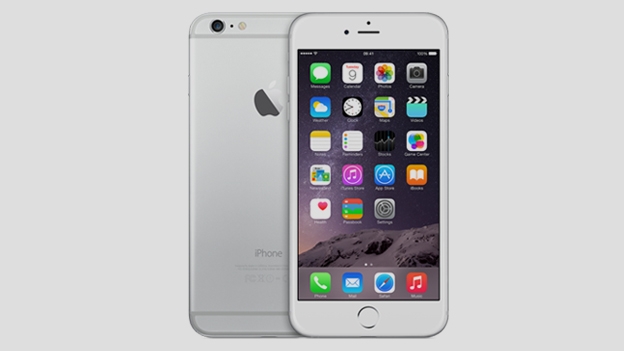
-
+
Full-HD screen
-
+
Stylish design
-
+
It's so big!
-
-
Hard to use one handed
-
-
Expensive
-
-
It's so big!
Why you can trust T3

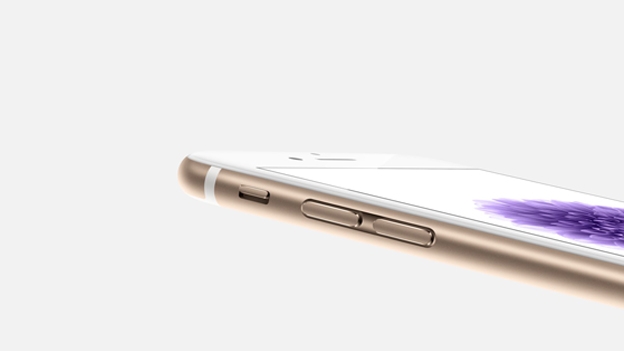
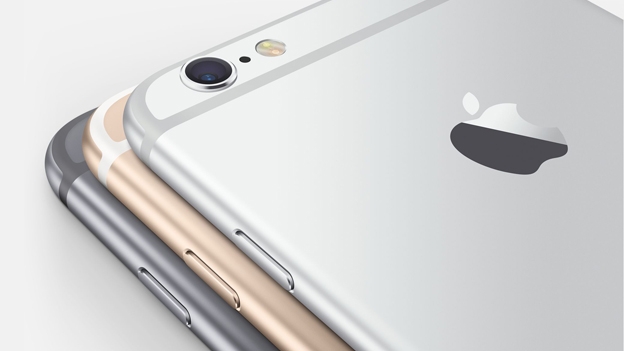
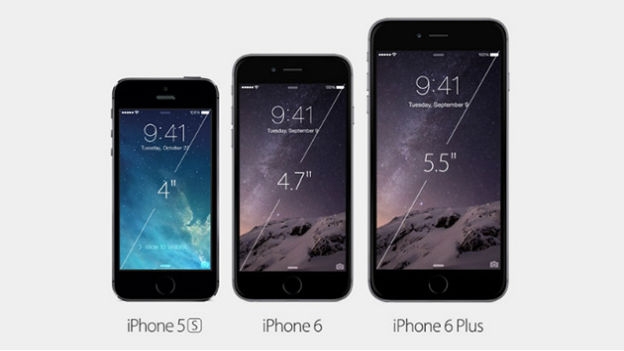
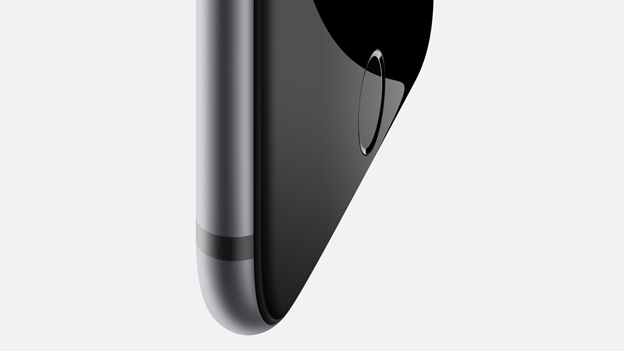
Apple has finally gone large with two super-sized smartphones at once, but does its first phablet, and biggest iPhone ever, demand 5.5 inches of your pocket?
The iPhone 6 Plus is the biggest iPhone Apple's ever made, which is not a fact to trip over lightly. That midland between smartphone and tablet occupied most impressively by the Samsung Galaxy Note 4 and LG G3 is a road that the Cupertino firm has shunned in the past for being clumsy to control. But not any more.
As the iPhone 6 Plus emerged from the Flint Center launch event as arguably the buzz handset, the way it can handle tasks differently to its smaller twin – a full-HD screen, that bigger battery and a tablet-style landscape mode – set it out as one to watch. We've had our hands all over it for the last couple of days, so here's our early verdict.
iPhone 6 Plus: Size and build
There's no way around it: the iPhone 6 Plus is big. Hella big. After years of being coy on whether size matters, this is a surprise smartphone monster from Apple. At 158.1mm long and 77.8mm wide, it's in Galaxy Note territory and more a bag-occupier than a pocket partner. The 172g on its waistline make it heavier than most in its weight class, but the metal chassis reeks of quality rather than creaks of plastic, and at just 7.1mm deep, it's not as cumbersome as you first think.
The single-piece structure is clever like that, tapering round its newfound curves to not just look slick but offer a reception boost, too. I've maintained, somewhat stubbornly, that the iPhone 4 to 5S “Block” era felt like a regression from the pocket-pleasing pre-3GS design, and for me at least order is restored. This is as elegant as an iPad Air but on a smaller scale.
However, the Cult of the Massive Phone is still a long-term membership that eludes me, having previously struggled with the mobile's bigger brethren and taken solace in the welcome wake of Mini and Compact varieties (and, of course, the old iPhones). Apple has always agreed till now and the 6 Plus feels like a commercial, rather than a creative, decision, tapping into untapped Eastern markets where big is best.
In testing at home we found ourselves not turning to our iPad much anymore, as the screen size of the 6 Plus could handle most needs; however, out in the field, its size found its way more often than not into bag, rather than pocket, which isn't ideal for a primary device. But this is an entirely subjective case.
The iPhone 6 Plus at least tries its best to ease you in, first bringing the power button down to the side to aid one-handed usage – a change that's on the iPhone 6, too, for consistency; with a bit of a wrist roll, it kind of works – then offering resizable text and finally with some clever software sidewalks.
Double-tapping the TouchID ring to shift the top app line down for easier access is a good idea on paper – so good it's nabbed its own, marketing-speak name, “Reachability”. But the execution can sometimes feel like a slight workaround – all that empty space not being used seems almost cavalier.
Much better is harnessing familiarity with iPads to bridge the transition to the bigger screen with the tablet-style landscape mode, meaning the home screen and Apple apps can all be viewed horizontally, with flipped dock, making transitions into movies and games sleeker and in-app redesigns in turn to optimise the space.
The landscape keyboard, for instance, when browsing the internet or sending messages is a double-thumb delight, with shortcuts aplenty down each side. In some ways, the 6 Plus is like a My First Phablet, and you really miss the landscape mode when you venture back to the smaller iPhone 6.
The same white/gold, white/silver and black/“space grey” colourways are present and correct from the iPhone 5S, in a “If it ain't broke, don't fix it” kind of a way (hey, at least they didn't add a blue option). The usual selection of proprietary protected cases will bring the colour if you so wish, the silicon appealing more than the leather in the phone's tight-fitting form.
iPhone 6 Plus: Screen
At 5.5 inches, the iPhone 6 Plus display is a beast and, let's just say it again, the largest phone Apple has ever served up. With a 1920x1080 resolution – that's 401ppi, pixel fans – it's the firm's first full-HD handset, too, outstripping the flagship iPhone 6, which presents an interesting choice conundrum.
Colours pop considerably on the IPS panel, the LED-backlit “Retina HD display” giving great clarity and contrast, slightly showing up the 5S in its wake. Flagship Android fans with Super AMOLEDs in their eyes may be less impressed than Apple upgraders, but it's hard to knock the quality on show here.
Viewing is considerably more agreeable from wide angles for those wishing to share that fairly sizeable screen, too, apparently due to “dual domain” pixels (no, us neither). Multi-touch interaction is as responsive as you'd wish, although the “oleophobic” coating is more of a sand bag rather than a wall against the inevitable flood of fingerprints.
iPhone 6 Plus: Camera
If a full-HD screen was not enough of a sway for the size upgrade, that the iPhone 6 Plus boasts optical image stabilisation, instead of the digital found in the standard iPhone 6, could do the trick. It reduces motion blur, particularly in low lights, though your interest in, and eye for, pro results, plus the shakiness of your hands, will affect how noticeably or how useful it is. It certainly brings it in line with the top-end Androids out there, for the spec purists.
While the now-protruding rear iSight camera – that's how thin the handset is – may sound familiar in spec from the similarly eight-megapixel, f/2.2 aperture number in the iPhone 5S, a host of tech and tweaks massages more out of it.
As HTC has re-enforced with its “ultrapixel” redefinition, megapixels only judge the size of images anyhow, and are not reflective of quality. Here the star is the refined autofocus, courtesy of a new “Focus Pixels” sensor, which helped produced some striking shots, while manual options are increased with the ridiculously easy to use expose controls.
The front-facing 1.2-megapixel camera handles FaceTime and Skype effectively, although we clearly don't have enough friends to palpably notice the “improved face detection”, but a burst mode's there for selfie nuts or 720p HD recording for the YouTube enthusiasts. It's all housed in a typically uncomplicated app of swipes and taps.
Of course, a camera upgrade wouldn't be the same without some new tricks to show off, and with the rear camera's 1080p HD video recording already bumped up to 60fps, it's left to the impressively professional 240fps slo-mo setting and time lapse, which sews pre-planned segregated shots into a compressed frenzy. We're using them a lot right now; we'll see in six months.
iPhone 6 Plus: Features
The iPhone 6 and 6 Plus, as you would expect, share a lot of core functionality. Importantly for phones to ring people on, the iPhone 6 pair purports to support more LTE bands than any other handset –20, that is – and 4G on the EE network we tested on was certainly strong and consistent.
Wi-Fi, too, was without lapse, downloading games and movies quickly from iTunes, and AirPlay synced with Apple TV a charm. As ever, it helps to be “all in” with Apple products to really get the most out of them, so those with a wider arsenal of Apple gear and services will get more benefit, which is fast becoming the smartphone norm. Connectivity, not just content, is increasingly king, after all.
Siri, the ever-present voice assistant, is on hand again to everyone, though, recognising songs, finding contacts, making appointments and getting directions for you when you're too lazy too type, while TouchID, with the announcement of contactless payment service Apple Pay coming to iPhones and Apple Watch, is becoming a real talking point.
While we trialled Pay's fingerprint-reading iWallet function out at the Cupertino event – and it was as quick as you would hope, authorising wirelessly without the need to enter the app – it's unfortunately not live in the UK at time of writing, so we'll have to revisit that after launch.
Similarly, the new M8 motion coprocessor adds a barometer to its combination of three-axis pyrometer, accelerometer and proximity sensor, to track elevation. It's an addition that could be genuinely useful for fitness apps, but with iOS 8 Health's many connected tentacles not yet active beyond the fairly limited pedometer – which seems to work a-OK – it's another “wait and see” on its effectiveness.
iPhone 6 Plus: iOS 8
What the iPhone 6 Plus does do right now is usher in the rest of iOS 8, not the most visually different overhaul of an operating system in the world, but one filled with fine-tuning and promise. Health as a hub for your fitness tracking, HomeKit for connecting up your domestic smart devices and CarPlay for ongoing automotive support are sure to command some of the most exciting developments in months to come, but right now we can only go on what you get full use of out of the box and while on beta.
Over iOS 7, which was already a very slick, intuitive OS, the most notable improvement is how iOS 8 tweaks the everyday usage a tad in almost all departments. Be it the walkie-talkie-style voice chats and predictive word help that iMessage now provides, the double-tap of the home button to bring recent contacts to the top of the screen, the multi-tasking email drafts that slide to the bottom without fuss, the instant suggestion of adding a contact's phone number atop their incoming email, the way you can now reply to messages from within the Notification Centre, or just how apps sync automatically to the new screen size. It's endlessly slick.
“Ours can do that!” scream the Android army, but as ever, it's refinement rather than revolution here; nothing is left to chance or out of place, consistency is all. Just like saying that NFC payments have been around for years, it's only useful once it's not only reliable but accepted at most places you shop. Apple, as ever, is interested in the end game, not in figuring things out on in public, which is why Apple Maps – increasingly improved on each iteration – stands out as such a misstep to this day.
iCloud Drive also slips in seamlessly to coordinate your online storage like some kind of silent, Dropbox-aping assassin. It's about time Apple sorted out iCloud, and it's done so well, with wide file support and the ability to view files created in apps you don't own. With the full complement of Apple Work apps onboard for new users, they may hope this sorts itself out naturally, but it's an inclusive touch.
Another addition to iOS 8's armoury is how it syncs with the new Mac OS, Yosemite, on desktops and laptops, such as making calls from your Mac as long as your phone's in Bluetooth-like range, or accessing emails or documents across both screens for more efficient working. The functionality is impressively seamless, and shows devices on the same hardware and software network at their best.
After all, in a world where effective ecosystems and bloatware often define your phone experience more than the tech it's running on, it's easy to forget the sheer level of quality software that Apple chucks in without saying a word.
iPhone 6 Plus: Performance
The iPhone 6 Plus's 64-bit, 1.3GHz dual core A8 chip is said to serve up a 25 per cent increase in processor speed and 50 per cent faster graphics with 50 per cent more power efficiency. If you want to Geekbench out on it, our sister site TechRadar found it hit a score of 2911 to the iPhone 5S's 2540, sitting it handsomely among the top tier of smartphones around. For the more tactile reviewer, it just feels as quick as you'd like it, a clear bump to performance, with no real stutters and that instant access that only a new phone brings.
The 1GB of RAM inside, again, doesn't sound too beefy, but seemed to handle the new multi-tasking features well and propped up some simultaneous emailing, video watching and HD gaming. Internal tweaks such as the Metal graphics upgrade we must wait to see the benefit of, but the new BioShock port is one of the most demanding games on iOS currently and it performed great, as did The Wolf Among Us (check out that colour spectrum) and Asphalt 8 (speeeeeeed).
The storage options of 16GB, 64GB and 128GB are a bit curious, as there's a gaping hole where the 32GB could be. It's a shame, as 16GB on a device that records 1080p HD footage at 60fps, runs multi-GB games and that's so built for consuming media as this is going to Hoover that up in no time. For us, the 64GB is the bare minimum, but you may like to consult your wallet.
iPhone 6 Plus: Battery
Often quoted as the iPhone's Achille's heel, battery life on the iPhone 6 Plus is boosted by the very nature of its size, although, in turn, that's a hell of a screen for it to power. Charged as ever through the Lightning connector, Apple reckons you get 24 hours talk time and 12-14 hours of internet, video and audio usage out of the 6 Plus, compared with 14 and 10-11 respectively on the standard iPhone 6.
Now, we'd love to live in a world where “quoted” numbers always turned out to be 100 per cent accurate, but we were surprised to find that the 6 Plus's battery had some very decent stamina, lasting over a day of general use on a fairly hectic work day, from productivity to pastimes. Not having to charge your mobile at the end of the day? What are these dark arts!?
Although, as you'd expect, giving it a real, intensive challenge will inevitably amount in drain. Again, our sister site TechRadar ran its patented “90 minute video test”, which plays a HD film at full brightness with email syncing in the background, which depleted 27% of its life blood – a fair whack.
iPhone 6 Plus: Verdict
The iPhone 6 Plus is a big departure for Apple – a BIG departure – and one initially we weren't onboard with, but its software stabilisers have helped us to stop worrying and learn to love the phablet. The full-HD screen (finally) is stunning, with so much display to get lost in, while the build tries its hardest to be as size-flattering as possible. The tweaks in iOS 8 are focused and shave noticeable seconds off tasks, while landscape mode is incredibly natural for typing and organising, and a design choice we wish had made it to the standard iPhone 6 just for its functionality.
Yet there are compromises, the biggest as ever being the price. With no 32GB storage option, any user above very light is going to be dropping 700 notes here; which is a lot for something which won't suit everyone's needs – and in this oversized frame that's a meal to manhandle with only one mitt, we're not sure the 6 Plus will. The size is definitely going to divide people, as it will come down entirely to what you want to use your device for.
But then it's supposed to – the iPhone 6 is also here for more traditional usage. It seems churlish to criticise the addition of choice or, in turn, a phablet for, in fact, trying to be a phablet. The iPhone 6 Plus on those terms is a strong first entry into a market that is palpably growing and has been dominated by Google's platform to date. Whether there are enough headline specs here to steal away Android phablet fans is questionable, but as a way of catching floating voters focused on usability, and upgrading existing users who have daydreamed about jumping to a bigger screen? Apple's just about on the money.
iPhone 6 Plus Release Date: 19 September 2014 (pre-order now)
iPhone 6 Plus price: £619 (16GB), £699 (64GB), £789 (128GB)
Sign up to the T3 newsletter for smarter living straight to your inbox
Get all the latest news, reviews, deals and buying guides on gorgeous tech, home and active products from the T3 experts
-
 Warning: Ciele’s refreshed Elite Collection may cause excessive garment envy on race day
Warning: Ciele’s refreshed Elite Collection may cause excessive garment envy on race dayFlex on your run crew with Ciele’s latest drop
By Matt Kollat Published
-
 Smeg adds a touch of navy sophistication to its iconic breakfast set
Smeg adds a touch of navy sophistication to its iconic breakfast setIt's a minimalist's dream
By Lizzie Wilmot Published
-
 My most anticipated Netflix movie of the year gets a wild new trailer
My most anticipated Netflix movie of the year gets a wild new trailerHavoc looks pretty unbelievable
By Max Freeman-Mills Published